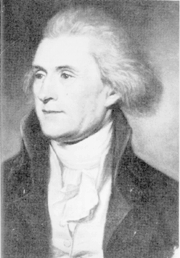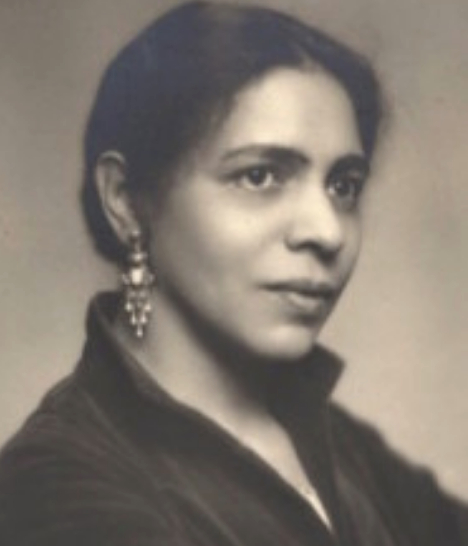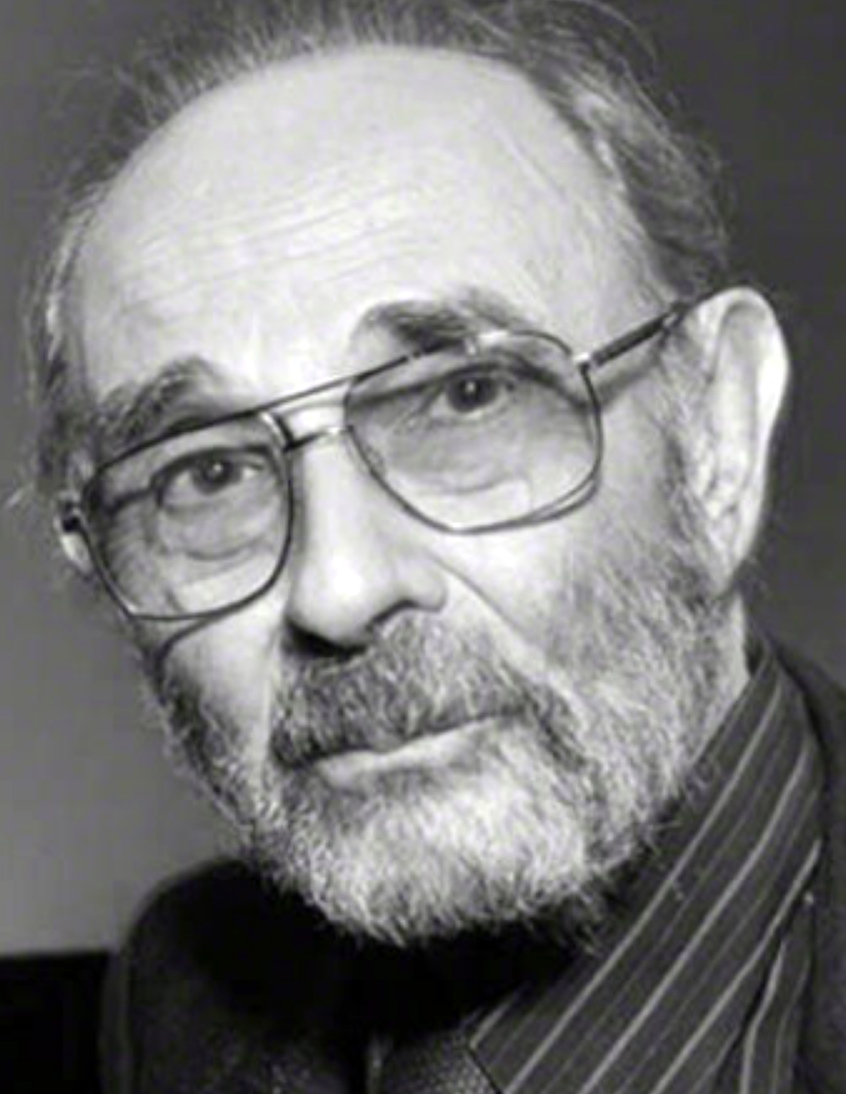April 13
Mattie Parry Krekel

On this date in 1840, freethought lecturer Mattie Parry Krekel was born in Goshen, Indiana, to John M. Hulett and Lucinda Jay (a direct descendant of revolutionary John Jay). Mattie liked to thank her parents for being liberal in their religious views, noting that her life had not been twisted or distorted by ecclesiastical influences which enslave the mind. She began lecturing at age 15 in Rockford, Illinois, and retired only in 1900. Mattie married T.W. Parry in 1862 and had six children, four sons and two daughters. Following his death she later married Judge Arnold Krekel of Missouri.
She was well-known on the freethought lecture circuit, or “Liberal platform.” Freethought biographer S.P. Putnam called her “one of the bravest and staunchest lecturers in the field … eloquent, scholarly, logical, ready for any hardship; has plenty of grit. … She is well informed on subjects pertaining to science and reform, and is in thorough sympathy with those who suffer and toil because of ignorance and superstition.” (Four Hundred Years of Freethought, 1894).
“Up to the beginning of the present century there were few names more familiar to readers of The Truth Seeker than Mattie Parry Krekel,” noted George E. Macdonald, one of the newspaper’s longest-lived editors (Fifty Years of Freethought, 1929). D. 1921.
—
Christopher Hitchens

On this date in 1949, writer and columnist Christopher Eric Hitchens was born in Portsmouth, England. He attended Cambridge and graduated from Oxford in 1970, reading in philosophy, politics and economics. From 1971-81 he worked as a book reviewer for The Times of London.
In 1981 he emigrated to the United States. He wrote “Minority Report,” a column for The Nation, from 1982-2002. He then wrote for Slate, The Daily Mirror, The Atlantic Monthly, Vanity Fair, Harper’s and several other publications. As a foreign correspondent, he covered events in 60 countries on five continents. He became a U.S. citizen in 2007.
Hitchens wrote a host of books, but is best-known in freethought circles for authoring The Missionary Position: Mother Teresa in Theory and Practice (1995) and God Is Not Great: How Religion Poisons Everthing (2007). His criticisms of President Clinton and support for President Bush’s 2003 invasion of Iraq made him increasingly controversial among progressive readership, but he remained a stalwart atheist and iconoclast. When the Freedom From Religion Foundation instituted its Honorary Board of Directors in 2010, Hitchens was a member.
In “Papal Power: John Paul II’s other legacy” (Slate.com, April 1, 2005), Hitchens pointed out that the pope “was a part of the cover-up and obstruction of justice that allowed the child-rape scandal to continue for so long.”
Hitchens married Eleni Meleagrou, a Greek Cypriot, in 1981. They had a son, Alexander, and a daughter, Sophia. After divorcing, he married Carol Blue, an American screenwriter, in a ceremony at the apartment of Victor Navasky, editor of The Nation. He and Blue had a daughter, Antonia.
After being diagnosed in 2010 with esophageal cancer, he died of pneumonia at age 62 at the M.D. Anderson Cancer Center in Houston. (D. 2011)
“Gullibility and credulity are considered undesirable qualities in every department of human life — except religion. … Atheism strikes me as morally superior, as well as intellectually superior, to religion. Since it is obviously inconceivable that all religions can be right, the most reasonable conclusion is that they are all wrong.”
—Hitchens, "The Lord and the Intellectuals," Harper's (July 1982)
George Jacob Holyoake

On this date in 1817, George Jacob Holyoake was born to a poor family in England. The young foundry worker attended classes in his free time, becoming a mathematics teacher. By 1840, Holyoake was a lecturer at the Worcester Hall of Science. Best-known for coining the term “secularist,” Holyoake dedicated his life to freethought. He was sentenced to six months in jail for saying England was “too poor” to support a God and should consider retiring him. He founded and edited a number of freethought journals, including Reasoner (1846-50), Leader (1850) and Secular Review (1876).
Holyoake wrote more than 160 pamphlets and works, including the books Origin and Nature of Secularism (1896), his autobiography, Sixty Years of an Agitator’s Life (1892), and the two-volume Bygones Worth Remembering (1905). He was president of the British Secular Union for many years, and became the first chair of the Rationalist Press Association.
As an Owenite, Holyoake was an ardent reformer who put causes over personal gain, helped work for women’s rights, political and educational reform, and personally aided refugees fleeing persecution. Contemporary American agnostic Robert G. Ingersoll wrote on Aug. 8, 1888: “There is no man for whom I have greater respect, greater reverence, greater love, than George Jacob Holyoake.” D. 1906.
“Free thought means fearless thought. It is not deterred by legal penalties, nor by spiritual consequences. Dissent from the Bible does not alarm the true investigator, who takes truth for authority not authority for truth.”
—Holyoake, "The Origin and Nature of Secularism" (1896)
Thomas Jefferson

On this date in 1743, Thomas Jefferson, who became the third U.S. president, was born in Virginia. As a young attorney and member of the Continental Congress, Jefferson drafted the Declaration of Independence. Jefferson became governor of Virginia in 1779, when the Anglican Church was disestablished as the state religion.
He wrote the Virginia Statute of Religious Freedom, whose preamble indicted state religion, noting that “false religions over the greatest part of the world and through all time” have been maintained through the church-state. The heart of the statute guarantees that no citizen “shall be compelled to frequent or support any religious worship, place, or ministry whatsoever.” It was adopted in 1786 and is replicated in most other state constitutions.
Jefferson spent five years in France as an ambassador, and therefore was out of the country at the time of adoption of the U.S. Constitution. He strenuously urged the addition of a Bill of Rights. He became the first secretary of state in 1789, vice president in 1796, president in 1800 and reelected in 1804.
In his Notes on Virginia (1781), Jefferson, a Deist, wrote: “Millions of innocent men, women and children since the introduction of Christianity have been burnt, tortured, fined, imprisoned. Yet have we not advanced one inch towards uniformity. What has been the effect of coercion? To make one half the world fools and the other half hypocrites. To support roguery and error all over the earth.”
He contemptuously rejected the holy trinity concept, regarded Jesus as a human teacher only and in 1804 composed a 46-page New Testament extraction titled The Philosophy of Jesus of Nazareth. In an October 1813 letter to John Adams, he wrote: “I have performed this operation for my own use, by cutting verse by verse out of the printed book, and arranging the matter which is evidently his, and which is as easily distinguishable as diamonds in a dunghill.” In 1820 he produced what became known as the Jefferson Bible, 84 pages. It was titled The Life and Morals of Jesus of Nazareth.
As president he issued his famous letter to the Baptists of Danbury, Connecticut, on Jan. 1, 1802, explaining that the Establishment Clause of the First Amendment builds “a wall of separation between church and state.” He refused to issue any days of prayer or thanksgiving, believing civil powers alone were conferred on public officials.
Jefferson owned about 600 slaves during his lifetime, some inherited. The highest slave population at his Monticello estate, in 1817, was 140. While some aspects of his ownership were seen as benevolent for the times, not everyone agreed. Virginia abolitionist Moncure Conway, born six years after Jefferson’s death, remarked that his reputation as an emancipator was undeserved: “Never did a man achieve more fame for what he did not do.” (Smithsonian Magazine, October 2012)
Jefferson instructed that the epitaph on his tombstone read: ” ‘Author of the Declaration of American Independence, of the Statute of Virginia for Religious Freedom & Father of the University of Virginia,’ because by these, as testimonials that I have lived I wish most to be remembered.” He and John Adams died on the same significant anniversary of July 4, 1826.
“Question with boldness even the existence of a God; because, if there be one, he must more approve of the homage of reason than that of blindfolded fear. … Do not be frightened from this inquiry by any fear of its consequences. If it ends in a belief that there is no God, you will find inducements to virtue in the comfort and pleasantness you feel in its exercise, and the love of others which it will procure you.”
—Jefferson's letter to nephew Peter Carr, written from Paris (Aug. 10, 1787)
Thomas Beddoes

On this date in 1760, physician and scientific writer Thomas Beddoes was born in Shifnal, England. He attended Bridgnorth Grammar School for his secondary education before moving to Oxford, where he attended Pembroke College, a constituent of the University of Oxford.
Upon completing his undergraduate studies, Beddoes enrolled in the University of Edinburgh Medical School, where he was taught chemistry and medicine. He met his wife Anna while working at the Bristol Pneumatic Institution, a medical research facility searching for a cure to tuberculosis. They had one son, Thomas Lovell Beddoes, who became a well-known British poet and playwright.
In 1788, the University of Oxford appointed Beddoes professor of chemistry. He taught at the school for six years during the French Revolution before resigning. During this time, his lectures made radical medical claims that drew attention from large audiences. Beddos hoped to extend Joseph Priestley‘s ideas on treating disease by the therapeutic inhalation of different gases and vapors. He contributed significantly to the British Enlightenment, but left Oxford after recognizing that his ideas were not welcomed by all.
Beddoes stressed the importance of imagination as it arises from one’s senses and criticized the use of religious maxims as teaching material. He believed that the source of children’s knowledge should come from learning natural history and studying natural objects themselves. He also speculated that our religious beliefs are a product of our environment and governance. D. 1808.
“Man created a God, a Heaven and a Hell.”
—"Thomas Beddoes M.D. 1760–1808: Chemist, Physician, Democrat" by D.A. Stansfield (2012)
Nella Larsen

On this date in 1891, Nellallitea “Nella” Larsen (née Walker), who became a well-known Harlem Renaissance writer, was born in Chicago to Mary Hanson from Denmark and Peter Walker from the Danish West Indies. Two years later, Walker disappeared from their lives. Nella took her stepfather’s surname after her mother remarried.
She grew up in Chicago, studied in 1907-08 at Fisk University in Nashville, Tenn., audited classes in Denmark and moved to New York City, where she trained as a nurse. She worked for a year as superintendent of nurses at Tuskegee Institute, then returned to New York in 1916 and married Elmer Samuel Imes, a physicist. By 1920 she had given up nursing and was starting to write. She became a library assistant at a branch of the New York Public Library, now the Schomburg Center for Research in Black Culture.
Her first book, a 1928 novel titled Quicksand, has a young protagonist with resemblances to Larsen, who pointedly disdains the religion she encounters at a fictional Black school. But after seeking refuge and a sense of community in a randomly attended church one night, she is swept up in the emotion of the service and is escorted home afterward by the charismatic preacher, whom she impulsively decides to marry. She moves with him to Alabama, where she is miserable and asks herself, “How could she, how could anyone, have been so deluded.”
Her 1929 novel Passing is about two light-skinned women who take divergent paths. A film adaptation debuted to great acclaim at the 2021 Sundance Film Festival. The film, directed by actress Rebecca Hall, stars Tessa Thompson and Ruth Negga in the title roles.
In 1933, Larsen became the first Black woman to receive a Guggenheim Fellowship, yet never published again. She divorced her husband in 1933 and from 1941 to her death of a heart attack at age 72 worked as a nurse and nursing administrator in a Brooklyn hospital. D. 1964.
“With the obscuring curtain of religion rent, she was able to look about her and see with shocked eyes this thing she had done to herself. She couldn’t, she thought ironically, even blame God for it, now that she knew he didn’t exist.”
—Larsen, writing in "Quicksand" about her character Helga Crane (1928)
Stanley Donen

On this date in 1924, film director and choreographer Stanley Donen was born in Columbia, South Carolina, to Helen (Cohen) and Mordecai Moses Donen, a women’s dress shop manager. He described his childhood as lonely and unhappy due to the dearth of Jewish families in Columbia and occasional bullying by anti-Semitic schoolmates. He sought refuge in movie theaters when he could.
His religious training was negligible, though he would come to be conversant with show business Yiddish. While his father was “deeply pious,” his mother was not. He was 13 when his sister Carla was born, his only sibling. “[The South] was sleepy, it was awful, I hated growing up there, and I couldn’t wait to get out,” he said. (“Dancing on the Ceiling: Stanley Donen and His Movies,” 1996)
He sometimes went with his father on buying trips to New York City, where they would take in musicals in the evenings. It was there his love of dance was awakened. He left school at age 16 and, encouraged by his mother, took a room in New York and landed a job in the chorus of the Broadway production of “Pal Joey.” Two years later he was hired as a dancer at MGM in Hollywood and appeared in the 1943 movie version of “Best Foot Forward,” which he helped choreograph. Gene Kelly, 12 years Donen’s senior, was playing the lead.
It was their first film work together in a decade-long collaboration that was extraordinarily fertile musically and visually. The peak, in many eyes, was “Singin’ in the Rain” (1952), which they co-directed and starred Kelly dancing in a downpour. Co-stars included Debbie Reynolds, Donald O’Connor, Jean Hagen (Best Supporting Actress nominee) and Cyd Charisse. A 2007 American Film Institute survey of the top 100 American movies ranked it at No. 5.
Whether directing, producing or choreographing, movie musicals were Donen’s oyster from about 1945 into the 1960s. Jean-Luc Godard called him “the master of the musical” whose forte was collaboration, which musicals as a genre rely on to succeed. His musicals included “Anchors Aweigh,” “Take Me Out to the Ball Game” (directed by Busby Berkeley), “On the Town,” “Royal Wedding” (Fred Astaire dancing up the walls and across the ceiling), “Seven Brides for Seven Brothers,” “It’s Always Fair Weather,” “Funny Face,” “The Pajama Game” and “Damn Yankees.”
Critics were less enamored with his rom-com and suspense films, with the exception of “Charade” (1963) for its exceptional Audrey Hepburn-Cary Grant chemistry and “Two for the Road” (chemistry courtesy of Hepburn and Albert Finney). “Blame It on Rio” (1984), panned by critics and starring Michael Caine, was his last directorial effort.
In between “Charade” and “Rio” was “Bedazzled,” starring Dudley Moore, Raquel Welch and (as Satan) Peter Cook. “The film pokes unremitting fun at God’s pathological need to be constantly bowed down to, complimented, admired, adored and fawned over by his mortal subjects and his immortal angels,” commented reviewer Richard Kavich. At the end, Cook shakes his fist skyward and exclaims, “God — you’re just unbelievable!”
All five of his marriages — to dancer and choreographer Jeanne Coyne, actress Marion Marshall, Adelle Beatty, actress Yvette Mimieux and Pamari Braden — ended in divorce. He had three sons, one of whom died of a heart attack at age 50.
“But he did not like living alone. For a time he had a cushion in his living room embroidered with the words ‘Eat, drink and remarry.’ ” (N.Y. Times, Feb. 23, 2019) Entertainer and filmmaker Elaine May was his longtime domestic companion after his last divorce in 1994 until his death at age 94.
The Academy of Motion Picture Arts and Sciences acknowledged his mastery in 1998 with a lifetime achievement Oscar for “a body of work marked by grace, elegance, wit and visual innovation.” It was seen by many as “Hollywood’s way of making amends because Donen had never been nominated for an Oscar, much less won one.” (Ibid.)
Introducing Donen for the award, director Martin Scorsese said, “Once upon a time, a lonely boy in South Carolina was sparked by the wonder of movies, captivated by everything from cowboys to comedians to movie monsters. And then he saw his first musical, ‘Flying Down to Rio.’ ” It starred Astaire and Ginger Rogers when Donen was 9. He died in New York City of heart failure, the last surviving director of Hollywood’s Golden Age. (D. 2019)
“Because of my mother I never became religious. I’m an atheist. I don’t believe in God. I never did.”
—Donen quoted in "Dancing on the Ceiling: Stanley Donen and His Movies" by Stephen Silverman (1996)
